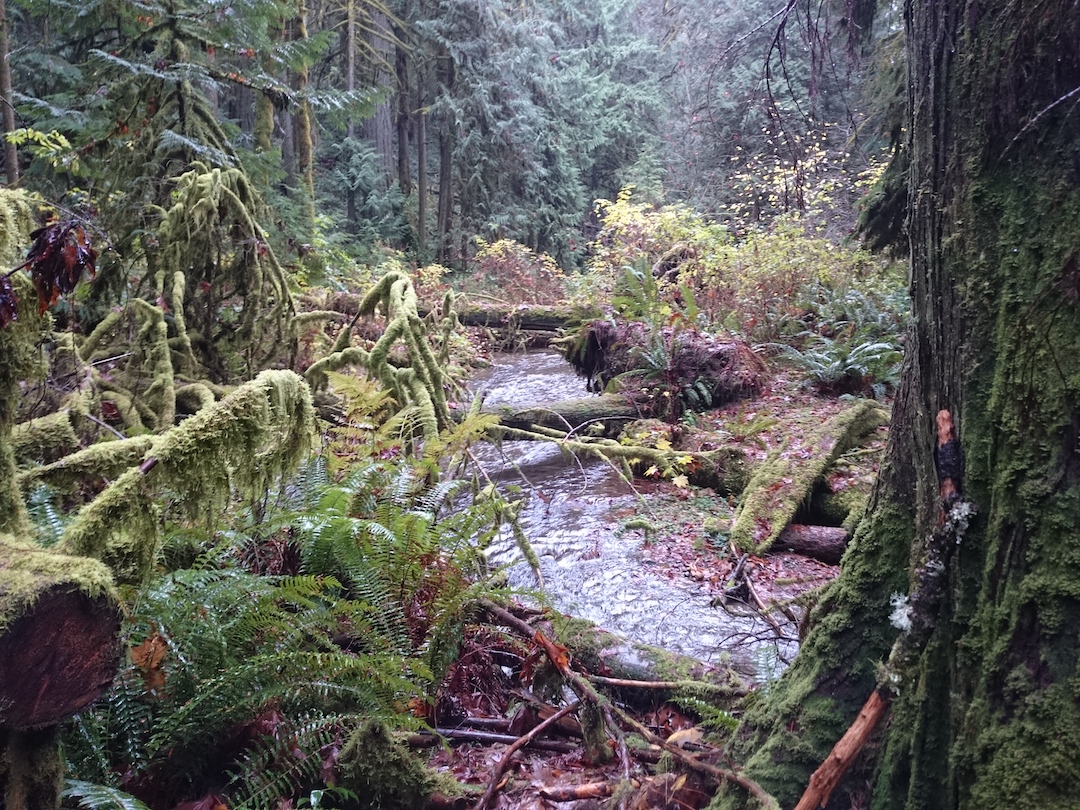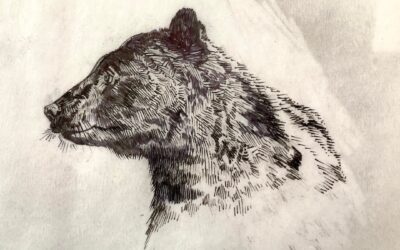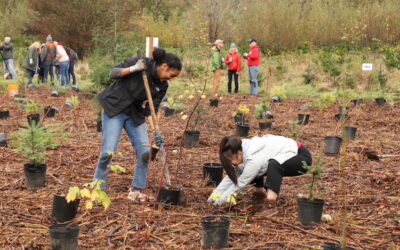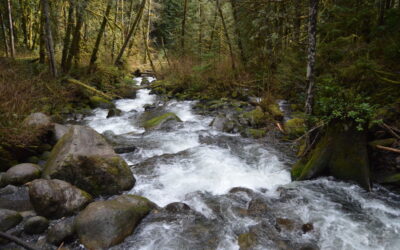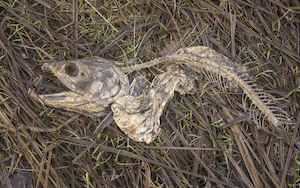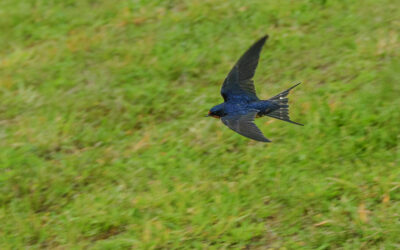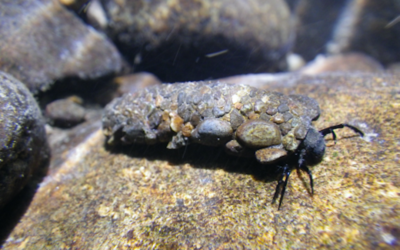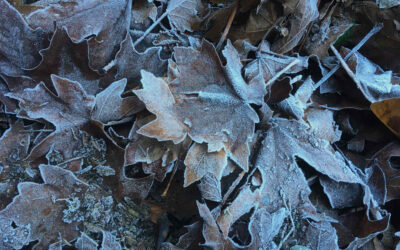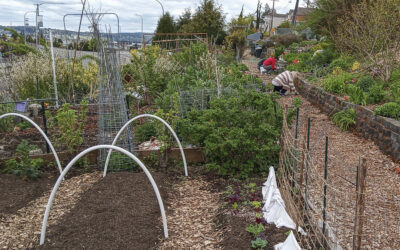THE MANY LIVES OF TREE
by Pat Kirschbaum, Winter 2020
Photo by John F. Williams
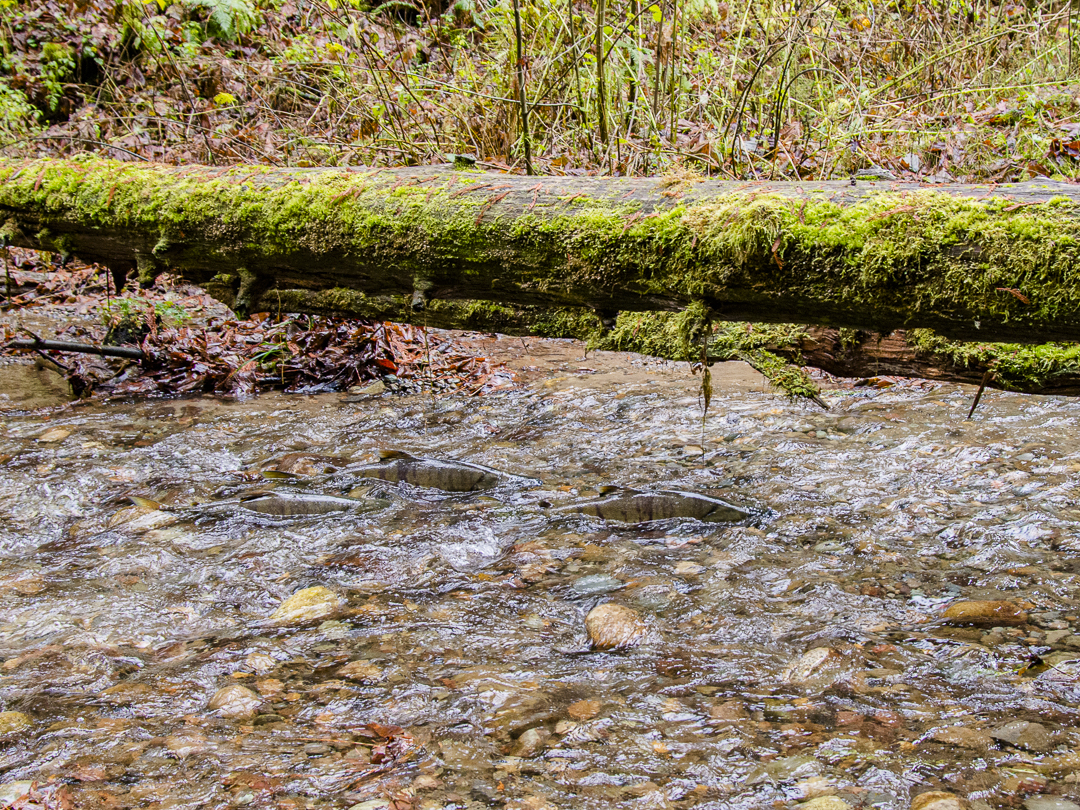
Photo by John F. Williams
THE MANY LIVES OF TREE
by Pat Kirschbaum, Winter 2020
We are so lucky in the Pacific Northwest to have many places to go where we can be surrounded by trees. As I sat alongside a nearby stream recently, I observed a beautiful Tree. It was tall with long branches and pretty green leaves that rippled in the wind. I sat and pondered how my Tree has many lives. Not as many as a cat, but still more than one! What kinds of lives can my Tree live?
First, as a full-grown adult, the roots of Tree hold on to the soil and help keep the stream bank from eroding. Tree’s leaves and branches provide shade to keep the water cool for salmon and other aquatic life. Each fall, Tree drops its leaves into the water where small invertebrates living at the bottom of the stream shred them for food. Tree is an important part of the stream ecosystem.
 See more about the invertebrates in streams in the article: Sacred Stream Insects.
See more about the invertebrates in streams in the article: Sacred Stream Insects.
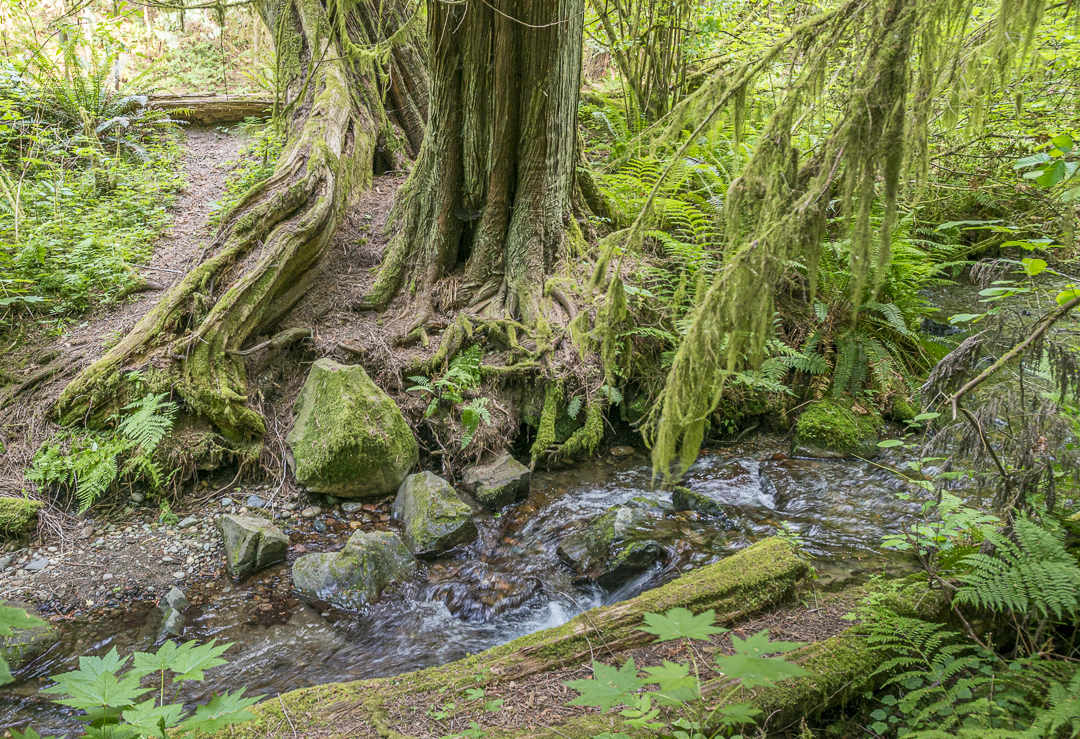
Photo by John F. Williams
As Tree ages, lightning hits, cracking the crown off the top. Tree dies and becomes a snag. You may think that’s it for Tree — it’s old and unsightly and no longer valuable — but look closer. Small holes, perfectly aligned around Tree’s trunk, are evidence of woodpeckers searching out the bugs that are eating the decaying wood.
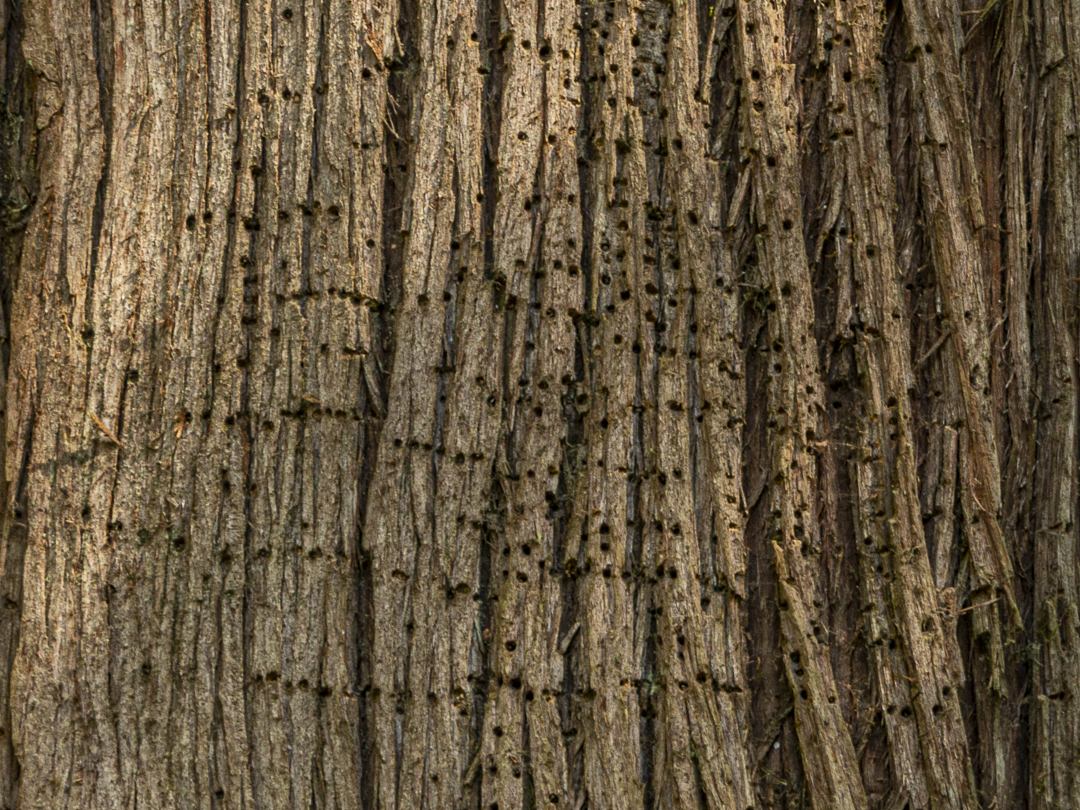
Photo by John F. Williams
In a larger hole toward the top of Tree, there are two sets of eyes peering out. A raccoon family has found Tree and made a home. Tree has taken on a new life as a snag and has become a home for a whole community of critters.
One day a storm moves into the area. The wind picks up and the old snag is blown over into the stream.
Tree falls across the stream. You may think that’s the end of Tree’s story, but Tree has a THIRD life — and this part of its life cycle intersects with another — the life cycle of salmon. Tree now becomes an important part of the stream, slowing down the water so adult salmon can swim upstream more easily, and young salmon can focus on growing bigger and stronger. Tree’s root ball protects the stream banks, keeping gill-clogging silt in the banks where it belongs. As it lies across the stream, Tree serves as a block, causing the water to flow around it, creating pools which provide a resting area for salmon.
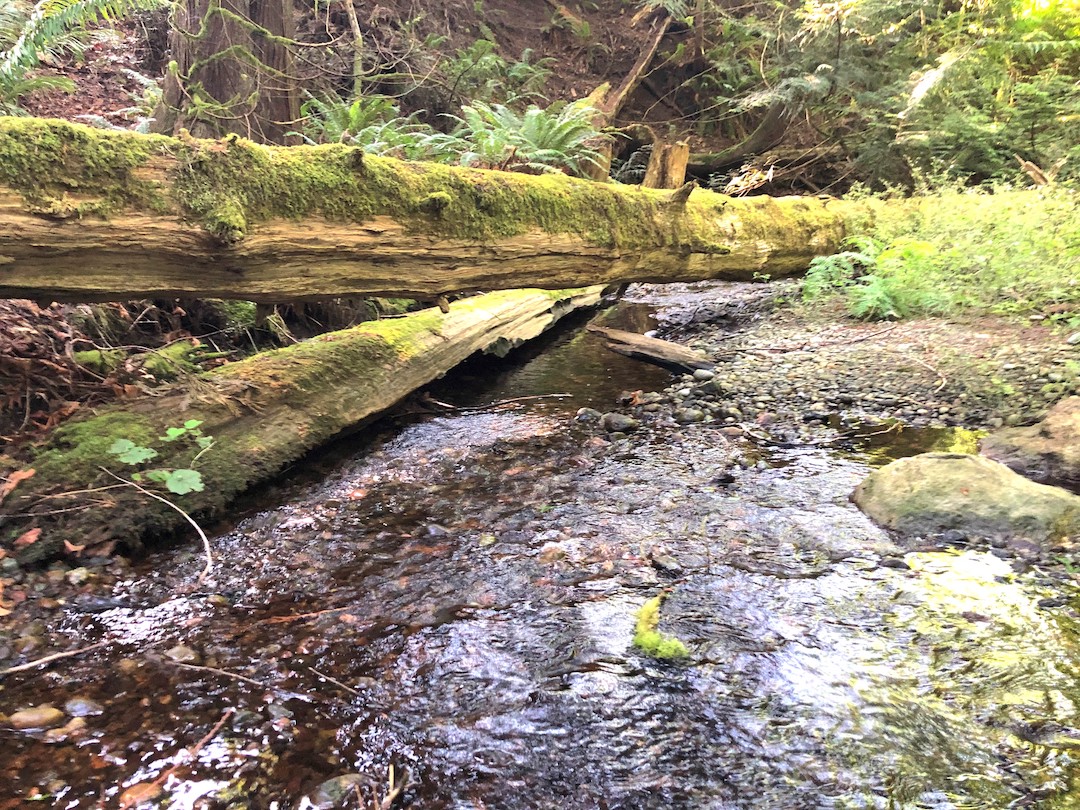
Photo by Pat Kirschbaum
The salmon grow, migrate to the ocean and, after several years, return as adults to the stream where they were born. They swim upstream to find wonderful pools created by Tree where they can rest. As they sense a predator, they hide under Tree for protection. The male and female salmon engage in their spawning dance, laying and fertilizing thousands of salmon eggs in the gravel collected by Tree. The pair guard their eggs as long as they can, ultimately giving the last swish of their tails.
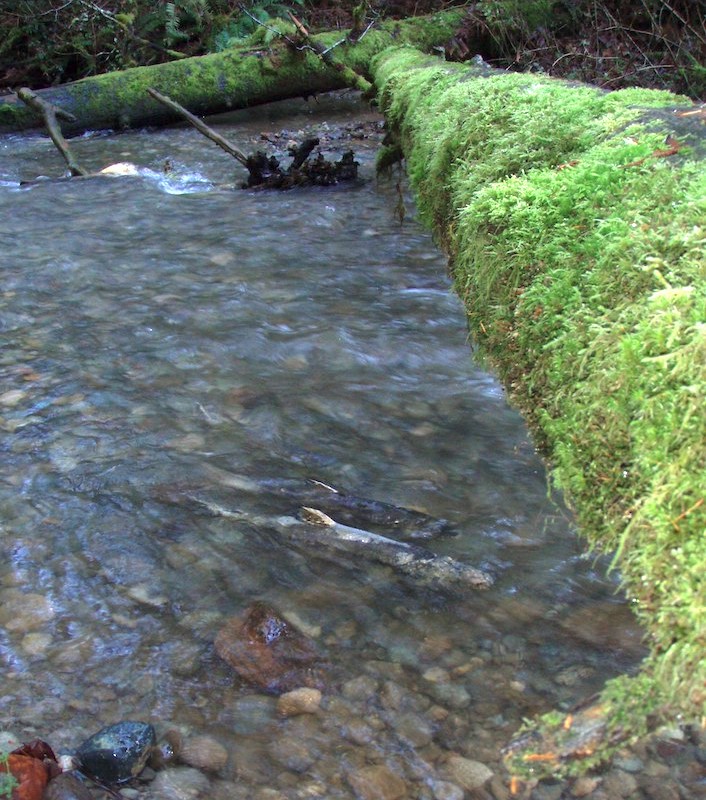
Photo by Pat Kirschbaum
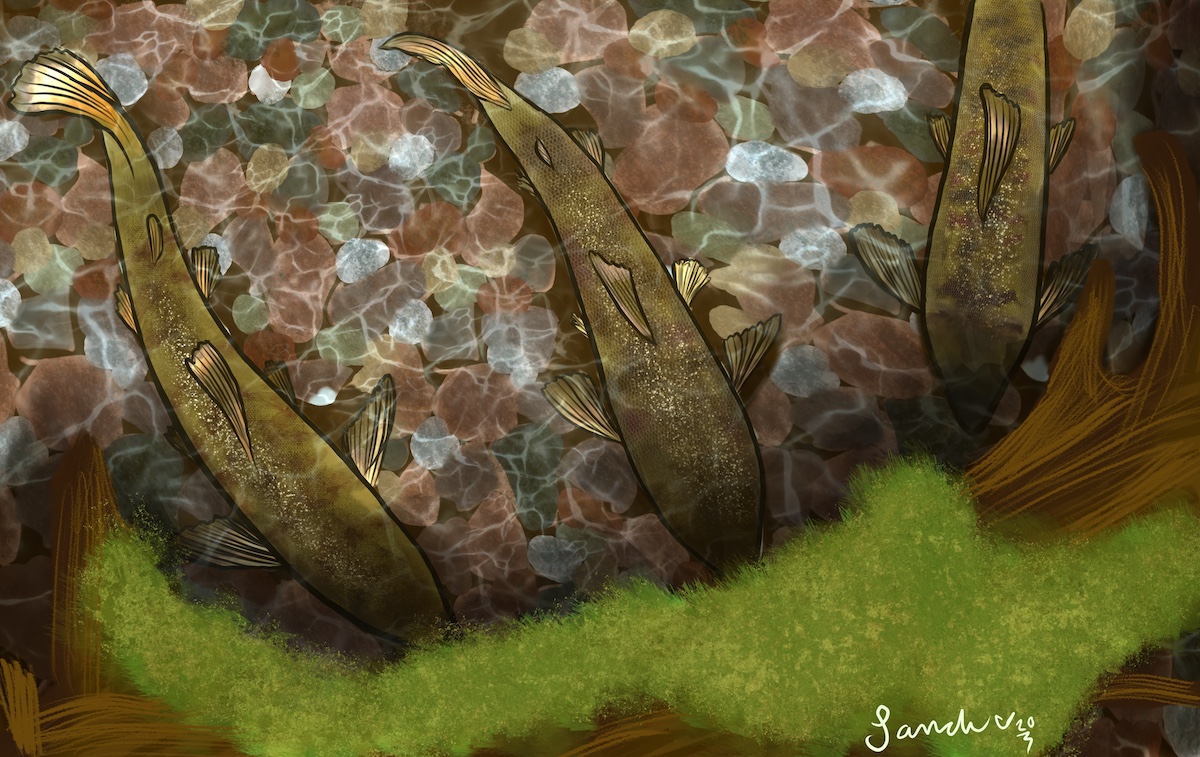
Artwork by Serenity Usman
Tree has provided the habitat needed for these salmon to survive, thrive, and create new life. Now it’s the salmon’s turn to help Tree. Although their life has ended, the salmon help to create new life. Their bodies decay along the side of the stream and the nutrients they absorbed while living in the ocean seep into the soil. These nutrients nurture the seed that Tree has dropped on the stream bank. A small Tree begins to grow, waiting to start its interconnected cycle with salmon all over again.
 See more about salmon feeding trees in the article Many Cycles of Nature.
See more about salmon feeding trees in the article Many Cycles of Nature.
My original Tree continues its work. Fungi and bacteria move in, triggering decay for Tree. As bark and hardwood decompose and fall into the water, more food is provided for the invertebrates living in the stream bed. Tree continues to decay until it becomes part of the stream bed or washes further downstream, making room for another tree to take its place.
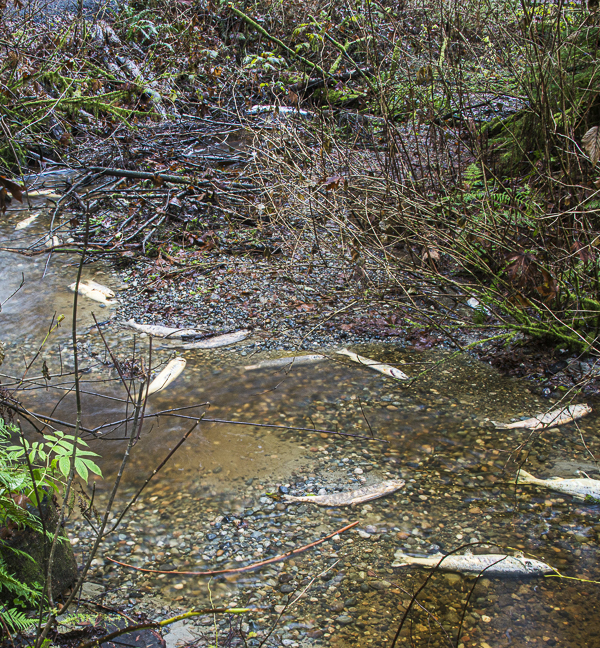
Photo by John F. Williams
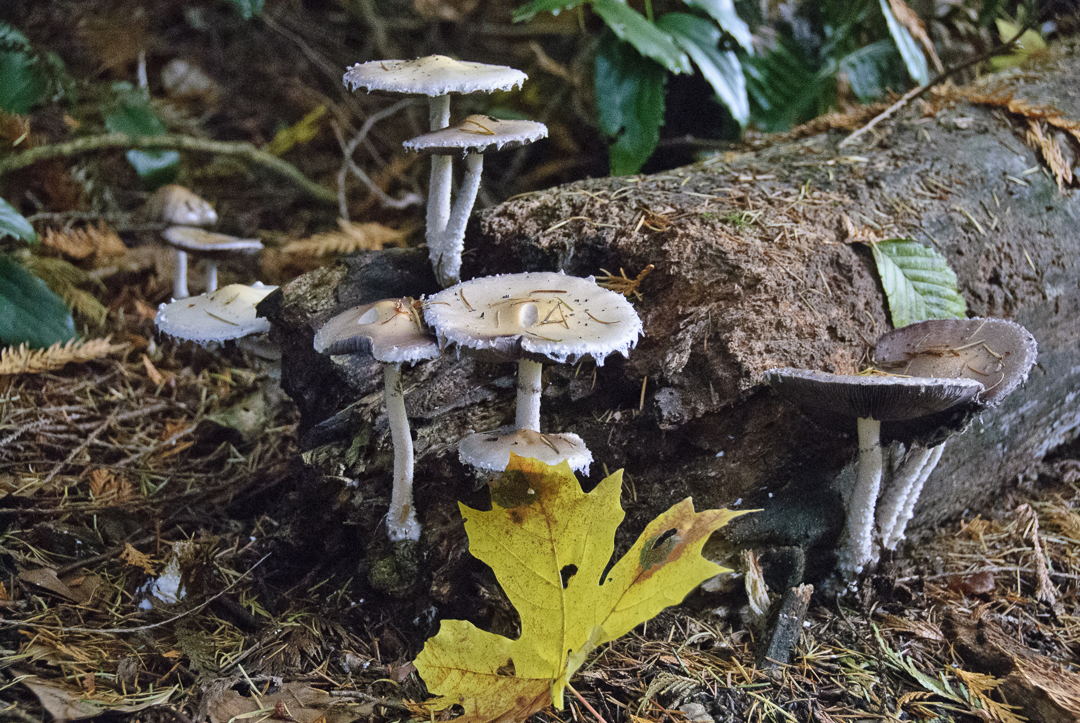
Photo by John F. Williams
While this story shows the cycle and interconnectedness of trees, salmon, and streams, trees also play an important role in our everyday lives. Take a walk someday near where you live. Find a tree nearby and take a few minutes to look at that tree — really look. What does that tree provide? You’ll probably come up with shade to keep our temperatures cool and oxygen for us to breathe. Trees also help to absorb or block sound and have been shown to have a calming effect on people. What about animals — are there any birds living in the tree? Any other animals you notice? Don’t forget, trees are also a resource we make things from — buildings, furniture, paper — many things we use every day are possible because of trees.
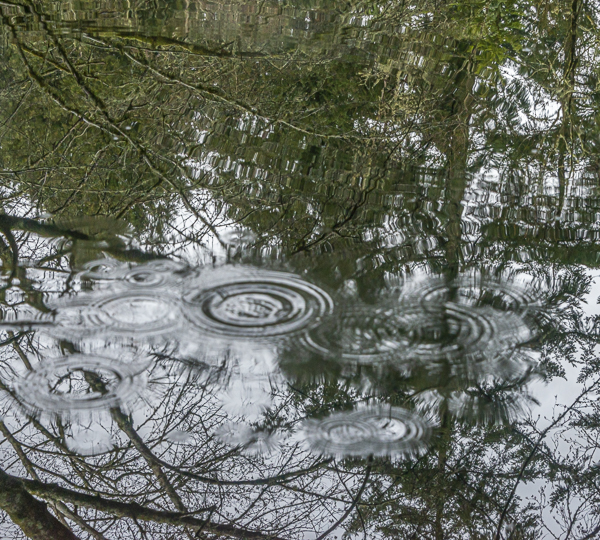
Photo by John F. Williams
Trees can also help to protect our streams and rivers, even if they are growing far from the stream or river. When it rains, the branches, leaves, and needles of trees intercept raindrops, so sometimes the water evaporates before even hitting the ground, playing an important part in the water cycle. This interception also helps to reduce stormwater runoff — the water that runs over the ground after a rainstorm. When large amounts of runoff flow into streams, it can cause damage to the stream bed and banks. The aquatic life that lives in the stream suffers. Runoff also picks up pollutants left on the ground and brings those pollutants to streams. Car oil, pet waste, lawn fertilizer, pesticides — these are just some of the pollutants that can get picked up by runoff and brought down to streams and Puget Sound. Trees play an important role in providing clean waterways and healthy habitat.
So remember, the next time you’re out and about, take a few minutes to reflect on a tree, its lives, and all the ways it supports our communities.
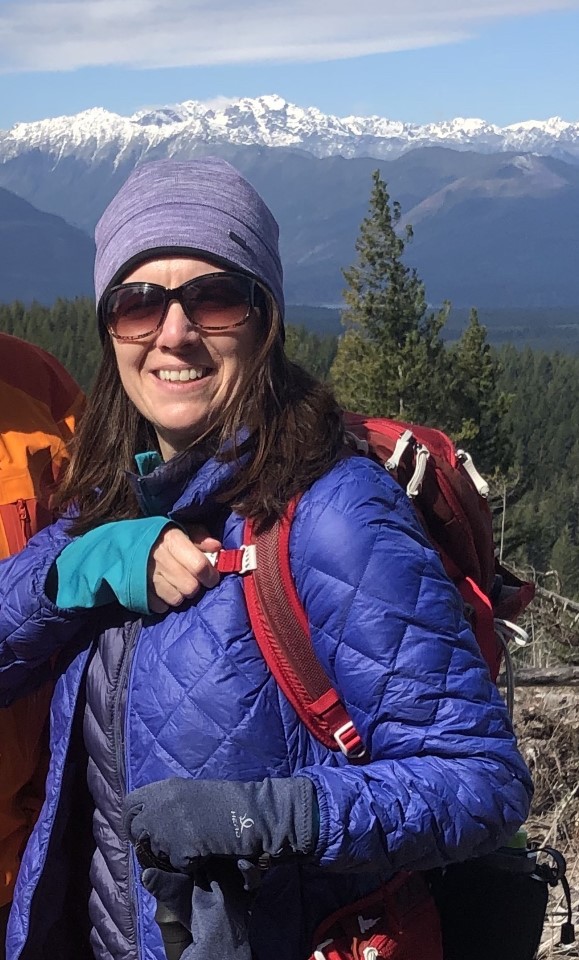
Pat Kirschbaum is a Stormwater Education and Outreach Specialist with Kitsap County Public Works. Originally from New York, Pat has spent the past 25 years teaching students and community members about stormwater, streams and salmon. She enjoys our Pacific Northwest and can often be found on the water clamming or shrimping; in the forests hiking or mountain biking; or in the mountains skiing.
Table of Contents, Issue #10, Winter 2020
Woodland Witness
by Zoe Wadkins Winter 2020 Drawings by Zoe Wadkinsby Zoe Wadkins, Winter 2020 Drawings by Zoe WadkinsIn the three years since our first introduction, I have walked this loop of Deer Creek more than one hundred times. Its rich macroinvertebrate habitat constitutes a...
Restoring Forests
by Dan Hintz, Winter 2020You can see this 2019 Mountains to Sound Greenway tree planting site at Lake Sammamish State Park, located along Issaquah Creek. Photo by Katie Egresi.You can see this 2019 Mountains to Sound Greenway tree planting site at Lake Sammamish State...
Salish Sea and Dinosaur Pee
by Sarah Lorse, Winter 2020 Photo by Sarah Lorseby Sarah Lorse, Winter 2020 Photo by Sarah LorseHow wonderfully wet things are here beside the Salish sea. Whether it is a big fat raindrop dangling off your nose or the impressive volume of a king tide, water is all...
See the Salish Sea by Saddle
by Jessica C. Levine, Winter 2020 Photos by Jessica C. Levineby Jessica C. Levine, Winter 2020 Photos by Jessica C. LevineI spend a considerable amount of time pondering cycles. As a cyclist, I bike year round. I’m also a naturalist and place-based science educator....
Many Cycles of Nature
by Leigh Calvez, Winter 2020 Photos by John F. Williams except as notedby Leigh Calvez, Winter 2020 Photos by John F. Williams except as notedAs children we come into a world filled with the cycles of nature. We watch with wonder as the first crocuses of spring poke...
Swallow Season
by Donna Bunten, Winter 2020 Photos by Donna Bunten except as notedPhoto by John F. WilliamsPhoto by John F. Williamsby Donna Bunten, Winter 2020 Photos by Donna Bunten except as notedI dread August—the end of summer, sliding farther down the slope towards darkness,...
Sacred Stream Insects
by Gavin Tiemeyer, Winter 2020 Photos courtesy of King County except where notedby Gavin Tiemeyer, Winter 2020 Photos courtesy of King County except where notedLearning about the natural cycles that govern the health of the Salish Sea starts with peering into your...
Issue 10 Poetry
Winter 2020Photo by Adelia RitchiePhoto by Adelia RitchieWinter 2020Water Drop By Mahathi Mangipudi Wide strokes of grey paint the sky On the windward side of the Cascades Air masses from the Pacific Ocean Saturated with water vapor Condense into little...
Community Gardens
by Alison Ahlgrim, Winter 2020Photo by Michael YatesPhoto by Michael Yatesby Alison Ahlgrim, Winter 2020My first visit to Everett was a reconnaissance mission to see if my husband and I might like to live there. Drawn to the water, we ended up at the waterfront...
PLEASE HELP SUPPORT
SALISH MAGAZINE
DONATE
Salish Magazine contains no advertising and is free. Your donation is one big way you can help us inspire people with stories about things that they can see outdoors in our Salish Sea region.
We also don't advertise Salish Magazine, so please spread the word of this online resource to your friends and colleagues.
Thanks so much for your interest and your support.
We also don't advertise Salish Magazine, so please spread the word of this online resource to your friends and colleagues.
Thanks so much for your interest and your support.

